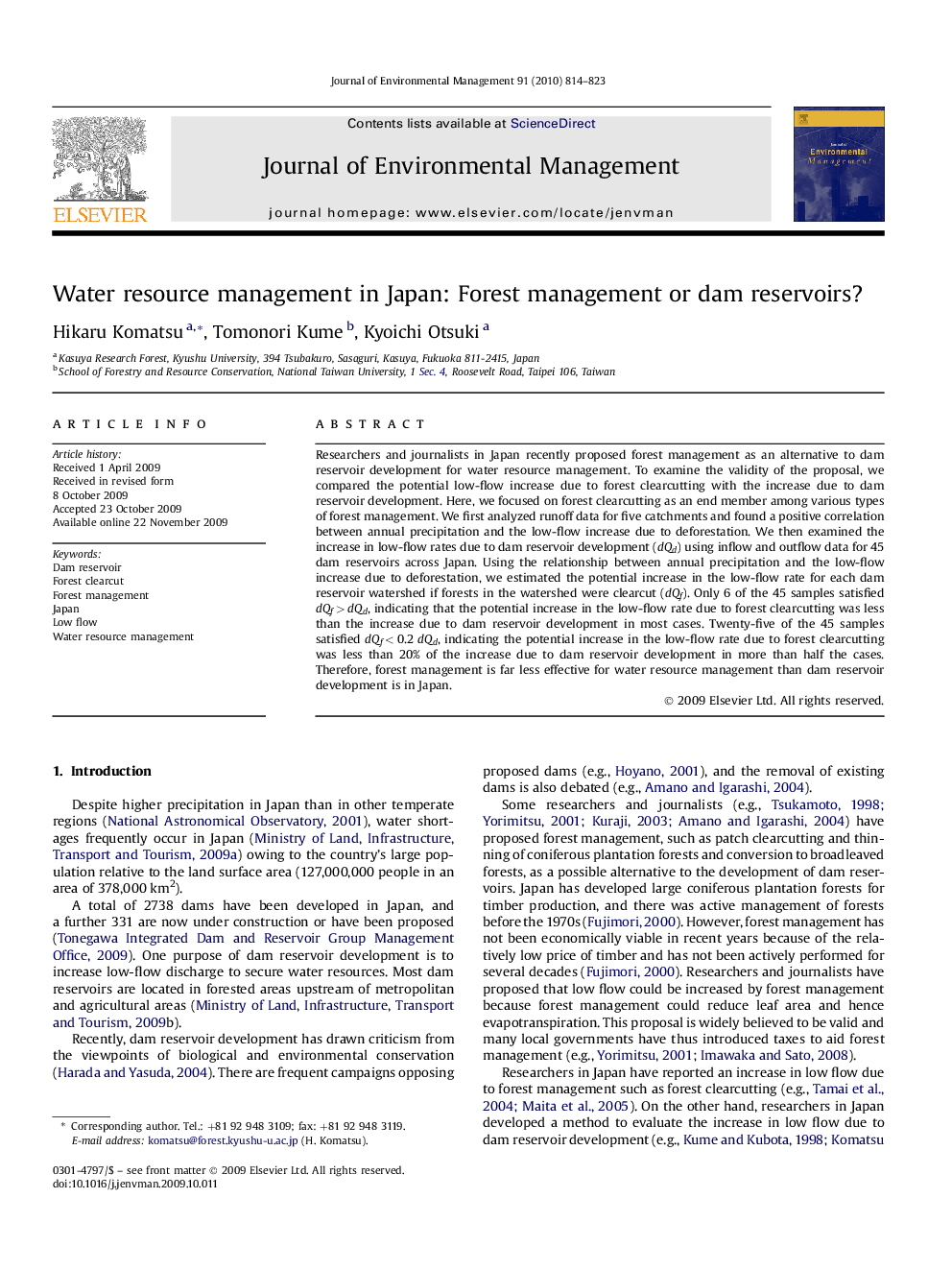| Article ID | Journal | Published Year | Pages | File Type |
|---|---|---|---|---|
| 1057672 | Journal of Environmental Management | 2010 | 10 Pages |
Researchers and journalists in Japan recently proposed forest management as an alternative to dam reservoir development for water resource management. To examine the validity of the proposal, we compared the potential low-flow increase due to forest clearcutting with the increase due to dam reservoir development. Here, we focused on forest clearcutting as an end member among various types of forest management. We first analyzed runoff data for five catchments and found a positive correlation between annual precipitation and the low-flow increase due to deforestation. We then examined the increase in low-flow rates due to dam reservoir development (dQd) using inflow and outflow data for 45 dam reservoirs across Japan. Using the relationship between annual precipitation and the low-flow increase due to deforestation, we estimated the potential increase in the low-flow rate for each dam reservoir watershed if forests in the watershed were clearcut (dQf). Only 6 of the 45 samples satisfied dQf > dQd, indicating that the potential increase in the low-flow rate due to forest clearcutting was less than the increase due to dam reservoir development in most cases. Twenty-five of the 45 samples satisfied dQf < 0.2 dQd, indicating the potential increase in the low-flow rate due to forest clearcutting was less than 20% of the increase due to dam reservoir development in more than half the cases. Therefore, forest management is far less effective for water resource management than dam reservoir development is in Japan.
